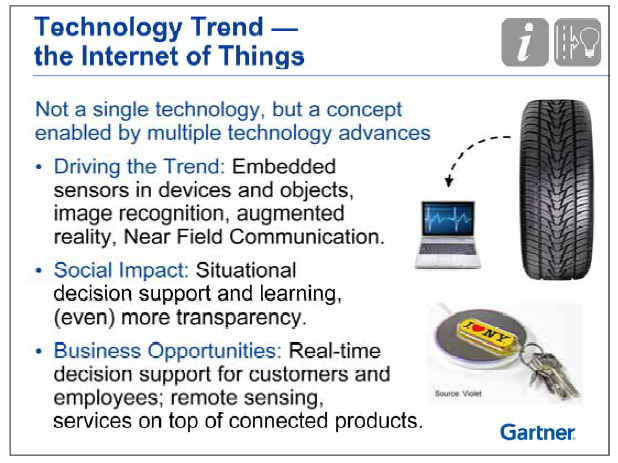FedEx CIO Carter: 'Next era of Internet is sensor-based computing'

FedEx Chief Information Officer Robert Carter said the company's big bet is that sensors and the Internet of things will dominate its mobility strategy in the future.
Speaking at the Gartner Symposium in Orlando on Wednesday, Carter covered a lot of ground ranging from service-oriented architecture, cloud computing and simplification of the rat's nest of IT. However, mobility is what extends those systems to the point where packages are actually dropped at a customer's house.
 FedEx actually owned wireless spectrum before cell phones became the norm, all in an effort to extend connectivity to the edge of a delivery. They created their own handhelds and had 800Mhz of spectrum in the 1980s. That spectrum has since been sold with the launch of cell phones, but Carter is big on mobility.
FedEx actually owned wireless spectrum before cell phones became the norm, all in an effort to extend connectivity to the edge of a delivery. They created their own handhelds and had 800Mhz of spectrum in the 1980s. That spectrum has since been sold with the launch of cell phones, but Carter is big on mobility.
What's next? Sensors -- lots of them.
TechRepublic: Fedex CIO: Use your ugly pictures to get stuff done
"The next era of the Internet is sensor based computing," said Carter. He held up the first generation of FedEx's SenseAware device. This device is dropped into a package and can relay back location, temperature data and even radioactivity levels if needed. FedEx launched the SenseAware effort in 2009.
The so-called Internet of things is one of the emerging technology themes at the Gartner conference. For CIOs, these sensors connect many distinct disciplines, including data management, analytics, business intelligence and customer service.
Other themes from Carter included:
- FedEx is an information services question. The company's ethos is that the information about the package is as important as the package itself.
- Enterprise IT is a young discipline. "Enterprise IT as a profession is only about 35 years old. It's a new science," said Carter.
- FedEx is architecture around service oriented architecture. The company is broken down into 22 services that are delivered to various operating units. These services cover addresses, locations, labeling and other items that "are foundational services that really matter to the business."
- Once those services are in place, interfaces and applications that aren't necessary fall away. "You're not entitled to an enterprise stack," said Carter, referring to operating units.
- FedEx's data centers run on VMware as an internal cloud. The hardware revolves around commodity x86 servers, said Carter. That architecture is the dominant design that is used by Amazon, Salesforce and others.
